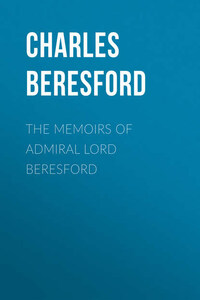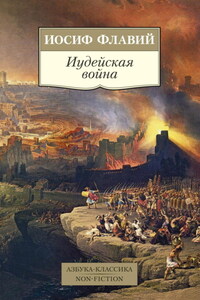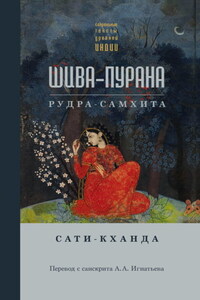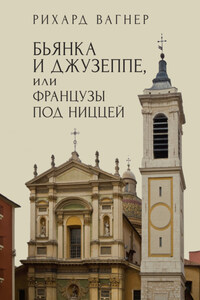PREFACE
This work is a record of my life from the year 1859, when I entered the Royal Navy, to the year 1909, when I hauled down my flag and came on shore.
For the Introduction and the Notes, which have been written in order to amplify the personal narrative and to connect it with the historical events of the period, Mr. L. Cope Cornford is responsible.
I have dedicated the book to my brother officers of the Royal Navy.
As luck would have it, my career has been of a singularly varied character. And my hope is that, in reading its story, boys and girls, as well as their elders, may find pleasure.
CHARLES BERESFORD
Admiral
1 GREAT CUMBERLAND PLACE, W.
June 1914
THE HOUSE OF BERESFORD
Lord Charles William de la Poer Beresford, born in 1846, was the second of five brothers, sons of Sir John de la Poer Beresford, fourth Marquess of Waterford. Lord Charles's elder brother, Sir John Henry de la Poer Beresford (to give him his full title), Earl and Viscount of Tyrone, Baron de la Poer of Curraghmore in the county of Waterford, and Baron Beresford of Beresford in the county of Cavan, in the Peerage of Ireland, and Baron Tyrone of Haverfordwest in the county of Pembroke, in the Peerage of Great Britain, Knight of the Most Illustrious Order of St. Patrick, succeeded to these titles in 1866. Sir John joined the 1st Life Guards. He died in 1895, and was succeeded by his son (nephew to Lord Charles), as presently to be noted.
Of the other three brothers, Lord William de la Poer joined the 9th Lancers and became Military Secretary to five successive Viceroys of India, was a patron of the Turf, and died in 1900; Lord Marcus de la Poer joined the 7th Hussars, took charge of the King's racehorses, an office which he still fulfils, and was appointed Extra Equerry to King George; Lord Delaval James de la Poer (sixteen years younger than Lord Charles) ranched in North America and was killed in a railway accident in 1906.
The five brothers were keen sportsmen, hard riders, men of their hands, high-couraged, adventurous, talented in affairs, winning friendship and affection wherever they went. Lord John-Henry, fifth Marquess, the eldest brother, inherited the family tradition of good landlordship. There was never any oppression of tenants on the Waterford estate. In the House of Lords and in the country, Lord Waterford took a strenuous part in the troubled and complex issues of Irish politics; although during the last years of his life he was crippled and helpless, the result of an accident which befell him in the hunting field. Lord William won the V.C. by an act of cool and audacious gallantry in the Zulu war of 1879; renowned for reckless hardihood, there was hardly a bone in his body which he had not broken; and it is probable that his injuries, diminishing his powers of resistance, caused him to succumb to his last illness. Lord Charles has broken his chest-bone, – a piece of which was cut out in his boyhood, leaving a cavity, – pelvis, right leg, right hand, foot, five ribs, one collar-bone three times, the other once, his nose three times; but owing to his extraordinary physique and strict regimen, he is younger and stronger at the time of writing than most men of half his age.
The family home of the five brothers was Curraghmore, a noble estate lying some twelve miles west of Waterford. The great house stands in a cup of the hills, whose slopes are clothed with woods of oak, the primæval forest of Ireland. The oak woods adjoining the house were planted with the design of supplying timber to the Royal Navy. Built foursquare, like most houses in Ireland, the mansion faces upon a vast gravelled quadrangle, closed in on left and right by the long ranges of stables. Beyond the lawns of the terraced garden, beyond the hanging woods, the bony shoulders of the mountains of Comeragh hunch upon the changing sky; nearer hand, darkens the lone hill of Croughaun; and day and night the noise of running waters, the voice of the Clodagh River, flowing through tawny shallow and sombre pool, breaking white-maned upon rock and fall, rises upon the quiet air. Looking westward from the bare summit of the hill above the deer-park, you shall view the rich valley parcelled into garden and farm and paddock, which are set among deep groves; in the midst, flanked by a gleam of water, the house darkens upon the westering sunlight; and beyond, the sparkling landscape fades into the profound and aerial blue of the mountain wall. Eastward, the rounded bosses of the forest clothe the hills; and in the valley's gentle opening, the river Suir, like a scimitar laid on cloth of tapestry, glimmers dark and bright upon the plain, which, studded with woods and dotted with white specks of villages, stretches to where the dim sea-line merges in the sky.
Over yonder, cloven through the heart of the ancient woods, a green drive rises to the skyline, bordered on either side by rhododendrons, like huge ropes of jewels, three miles long. In the forest there is silence. Few birds or none nest in that deep labyrinth of silver-barked and shaggy trees, rooted for centuries in the mould of their own perennial decay. The martin-cat is lord of that hoary solitude. As a boy, Lord Charles trapped the martin-cats, and presented his mother with a muff made from their skins.








